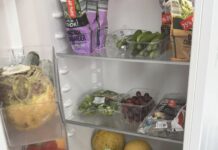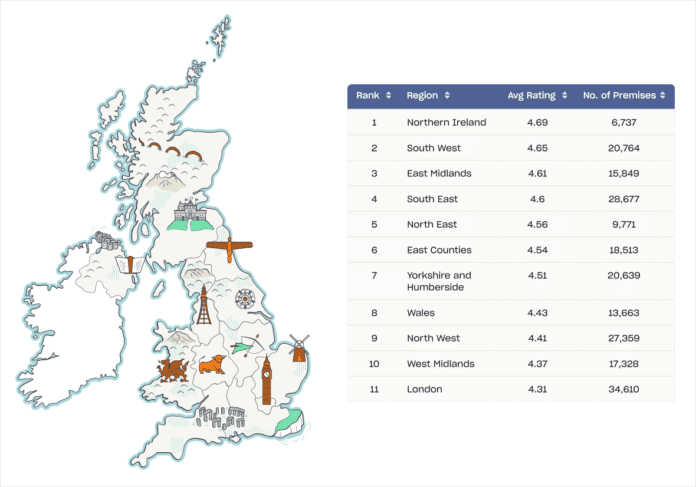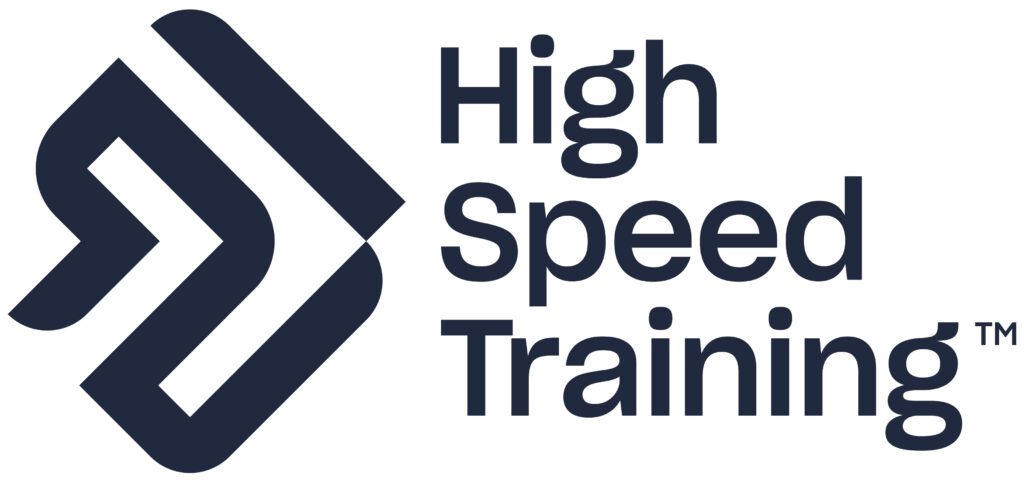
- nedd, Wrexham and Anglesey/Conwy (joint) rank as the top three areas in Wales, just as they did in 2019. Each area improved their rating by an average of 0.1
- Blaenau Gwent has the lowest rating in Wales with an average of 3.99. It is the only region in Wales with a rating below 4.
- Swansea and Cardiff ranked 10th and 14th respectively.
- Merthyr Tydfil and Rhondda Cynon Taf, who were joint bottom in 2019, are among the biggest improvers in Wales, with increases of 0.13 and 0.15 respectively.
- Top three local authorities: Gwynedd, Wrexham, Anglesey
- Bottom three local authorities: Merthyr Tydfil, Torfaen, Blaenau Gwent
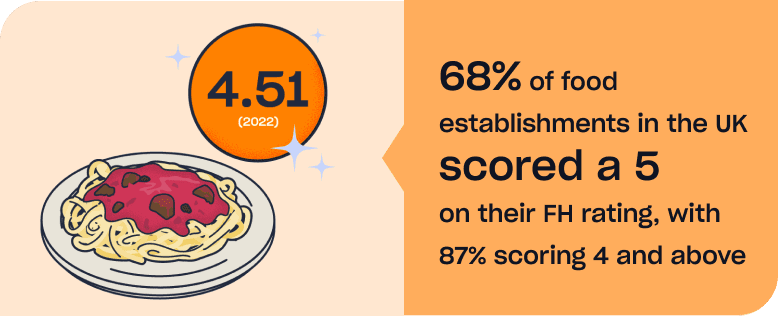
The local authorities across Wales that score highest and lowest for their food hygiene ratings have been revealed, thanks to a report from online training provider High Speed Training.
The report, which analysed Food Standards Agency (FSA) data for over 230,000 food businesses across England, Scotland, Northern Ireland and Wales, found that in [region], the average food hygiene rating across all food establishments was 4.43 from almost 14,000 premises, which places Wales in 8th position when compared to regions of the UK.
However, a similar report run in 2019 by High Speed Training calculated Wales’ score at 4.36, showing that food hygiene standards have improved across the region in recent years, although the nation did place 7th in those rankings.
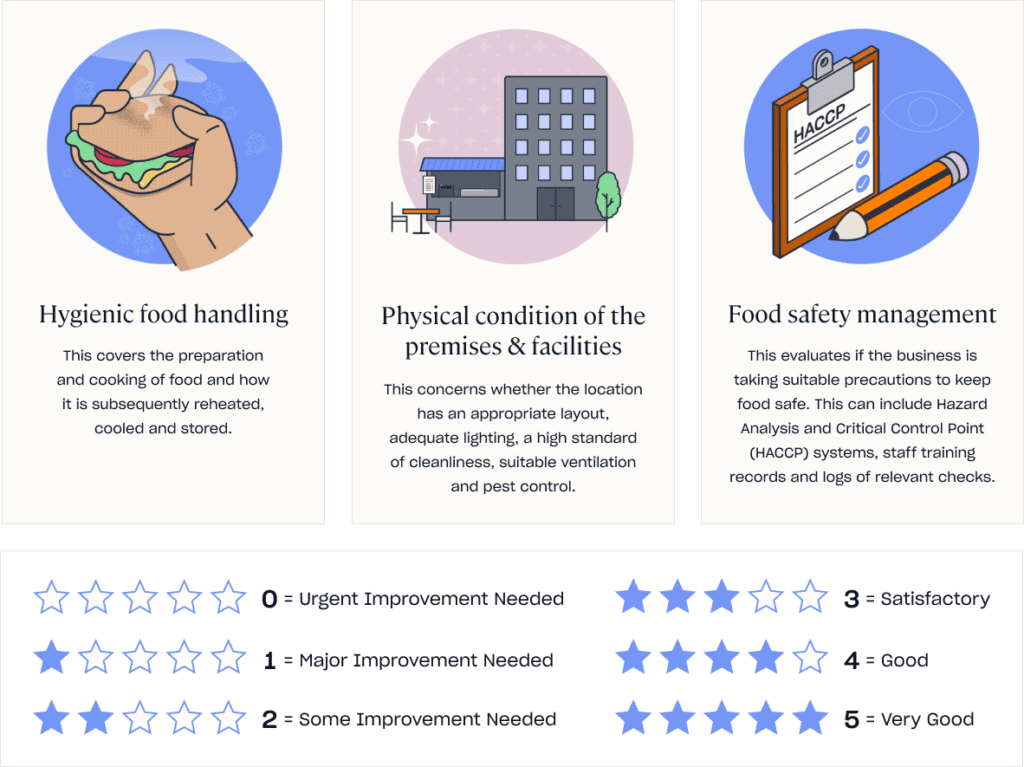
The Food Hygiene Rating Scheme (FHRS) is a partnership with local authorities in England, Wales & Northern Ireland. The scheme aims to provide customers with information as to how well a business is upholding food hygiene and safety standards.
Following regular inspections, ratings are devised based on the standard of food handling hygiene, the physical condition of the premises & facilities and food safety management practices.
These ratings are then made available on the Food Standards Agency (FSA) website and are usually visible from outside of the premises, often presented in a window near the entrance.
In Wales and Northern Ireland, it is compulsory for businesses to display their food hygiene rating. However, in England it is currently just considered best practice.
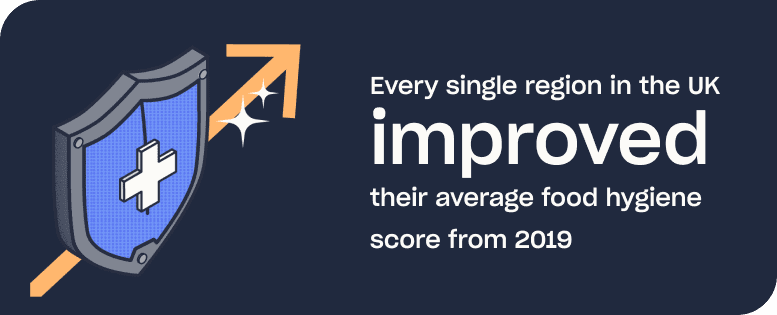
The top ranking local authority in Wales was Gwynedd, with an impressive average score of 4.83 from over 1000 premises, meaning it would rank joint 3rd in a list of towns and cities from across the UK.
The biggest improvers in Wales from the 2019 report were Wrexham (4.82) and Rhondda Cynon Taf (4.04), who both improved their average scores by 0.15.
Cardiff (4.25) ranked 14th in Wales, with more than one in three takeaways (34.95%) and 17% of restaurants in the city scoring a three or below for their rating.
Swansea crept into the top 10 with a rating of 4.43. More than a quarter of takeaways in the city (26.6%) and 10% of the takeaways scores a 3 or below for their food hygiene rating.
The lowest average rating in Wales went to Blaenau Gwent, with an average score of 3.99, meaning that they would rank 3rd bottom when compared to towns and cities across the UK.
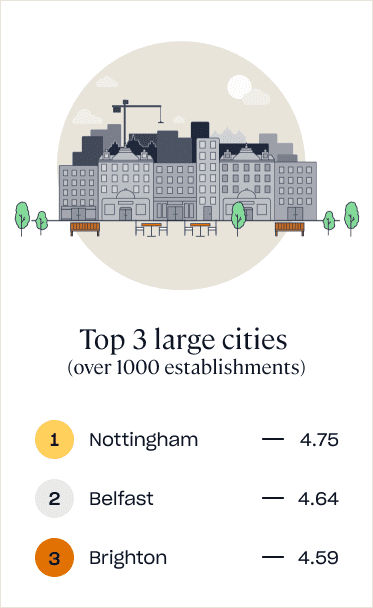
High Speed Training’s report also found that more than 1 in 4 takeaways (26.9%) across Wales scored 3 or below for their food hygiene rating, and that 85.7% of all premises scored a 4 or a 5, with 94% of hotels, B&Bs and guest houses and 88.63% of restaurants achieving a 4 or a 5 for their score.
Eilidh Paton, Owner of Alba Food Safety Consultancy and Chartered Environmental Health Officer, said: “Food Hygiene inspections and ratings are extremely important. From a legal perspective, they ensure businesses are compliant, but mostly, they are designed to help businesses provide safer food.
“These results certainly fit with my experience. Takeaways, on average, tend to have a lower rating for a large number of reasons, but mainly it is down to much a larger number of orders per day than say, a B&B would. It’s fast food, so the customer expects to get it quickly, leaving less time for staff to focus on cleaning and paperwork.
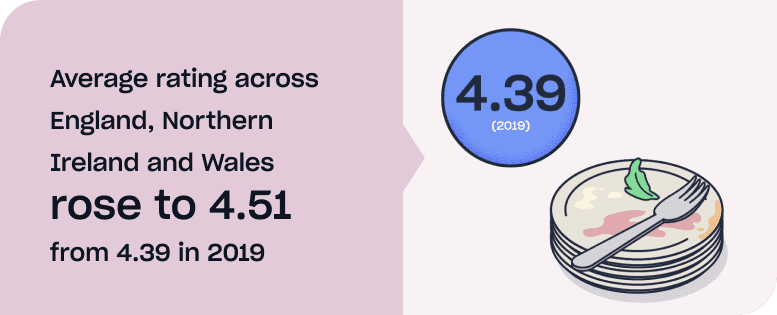
“Customers should be aware of Food Hygiene ratings, so they can spend their money in businesses that invest in their safety. It also gives consumers the assurance that businesses are safe to eat in as they are regularly inspected by competent officers.”
Richard Anderson, Head of Learning Development at High Speed Training comments: “One of the biggest responsibilities as a food establishment is ensuring that food safety and hygiene practices are thorough and up to date. This is why it’s so important to look at the rating accredited by the FHRS as it’s a direct reflection of how that establishment operates and the importance it places on its livelihood.
“As our analysis shows, on a whole, ratings are fairly high across the whole of the UK with every single region in the UK improving their average food hygiene score from 2019. However, for the proportion of establishments with a low hygiene rating, it can be extremely off-putting for customers and ultimately have a significant impact on your reputation and profitability as a business.
“There’s definitely more some establishments can do to improve their hygiene rating, firstly ensuring that all relevant staff have up to date food hygiene training and are aware of their specific responsibilities. It’s then a case of implementing good practices every day to stay on top of hygiene standards.
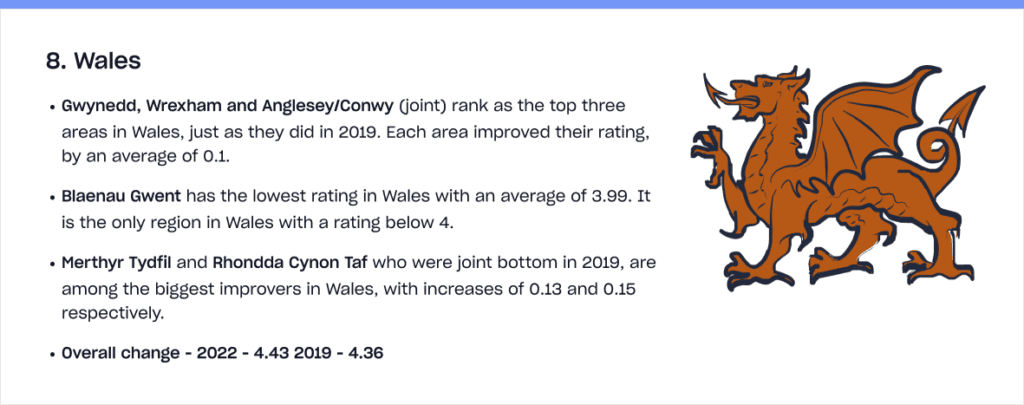
“And for those customers turning a blind eye when it comes to checking a hygiene rating, we would definitely urge you not to as ignorance isn’t always bliss! We would always recommend checking hygiene ratings before eating at an establishment so you can make an informed call as to whether you eat there.”
To view the report in full, and to see how your area compares to others, please click here
Wales Key findings
- Gwynedd, Wrexham and Anglesey/Conwy (joint) rank as the top three areas in Wales, just as they did in 2019. Each area improved their rating by an average of 0.1
- Blaenau Gwent has the lowest rating in Wales with an average of 3.99. It is the only region in Wales with a rating below 4.
- Merthyr Tydfil and Rhondda Cynon Taf, who were joint bottom in 2019, are among the biggest improvers in Wales, with increases of 0.13 and 0.15 respectively.
- Overall change – 2022 – 4.43 2019 – 4.36
Help keep news FREE for our readers
Supporting your local community newspaper/online news outlet is crucial now more than ever. If you believe in independent journalism, then consider making a valuable contribution by making a one-time or monthly donation. We operate in rural areas where providing unbiased news can be challenging. Read More About Supporting The West Wales Chronicle










